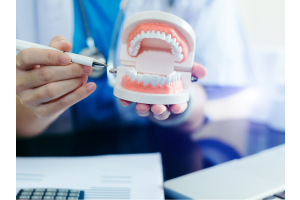Types of Dental Burs and Their Uses

Dentists already hear of the term dental burs. It is a device which drills tiny holes into the teeth. Mostly, handpiece of the dentist is used along dental burs for making any incision to the teeth effectively. It helps the dentists to carry out a dental procedure in smoothest way possible.
However, there is a wide stock of dental burs depending on various sizes, shapes and materials which cater various procedures, conditions and situations. Such bewildering range can confuse you, which is why we compile them in this blog with their uses.
This guide will let you choose the most suitable one as per your requirement. So, don’t miss to read it out.
What’s dental bur?
Before delving straight into the types and the usages of dental burs, first of all you need to understand the basic of dental bur. It is the most important part of general dentistry upon which every dentist can blindly rely.
In general, it is a kind of rotary instrument specifically designed to cut hard tissues like tooth bone or enamel. It is available in a gamut of grits, sizes and shapes consisting of 2 or more cutting edges and multiple sharp-edged blades.
Previously, it was in use for tooth restoration preparation mainly as cutting device. However the influence of technology and science drives it to another height. Now, it encompasses several options to deliver in various dental procedures. High quality and robust dental burs are prepared from diamond, tungsten carbide, stainless steel and steel.
Every bur has 3 parts- the shank, the neck and the head. Moreover, the shanks are also available in 3 types. These are friction grip, right angle/latch-type and handpiece/long straight bur.
Variety of burs depends on shanks, materials and shapes.
Depending on Shanks
Shanks comprise the longer part of burs. It has various ends for attaching to various kinds of handpieces and differ the burs in various lengths.
1. Long straight Shank (HP)
These are used on low-speed handpieces. So, it is useful to cut the diamond discs. But, these are also helpful to use in certain dental surgery procedures.
2. Latch-type Shank (RA)
Generally, it is 20mm in length and 2.35mm in diameter. Thus, it perfectly fits on slow speeded handpieces along contra angles. The shapes of this kind of burs are identical to that of Friction grip shanks.
3. Friction grip Shank (FG)
Often it makes use as combined with diamond or carbide head burs. However, high speeded handpieces attach to it. Often the size of this dental bur is 20mm in length and 1.6mm in diameter.
Depending on Materials
On the basis of materials every bur has its own set of pros and cons. Here are some of them.
1. Diamond Burs
Dentists can use it with the help of high-speed handpieces. Known as toughest material, diamond burs are effective in grinding porcelain or cutting through zirconia. It is available in a range of grits and shape starting from super coarse to ultra-fine. It is very useful to cut porcelain restorative dental material.
Therefore, dentists mainly use them during veneer and crown procedures as they can minimise the structure of the teeth. Just because of excellent quality it can deliver excellent accuracy enabling a smooth and quick cut. Sometimes, it has a role to polish the teeth too.
You can get BluWhite Diamond Burs Flat End Taper FG FG410 Coarse 021 [Pack of 1] from here. Also you can find a stock of various diamond burs to choose from!
2. Carbide Burs
Made from Tungsten carbide, it is 3x sturdier over steel. As it is of such durable substance, it is able to retain the sharpness for long serving as an outstanding cutting device in dentistry. Similar to diamond bur, it is also available in a range of shapes. There is an incision in the head of the bur which makes it highly efficient with minimal buildup of debris.
Whilst it is about removing restorations made from metal, this is going to make the job easier than ever. Even, dentists can use it for polishing and trimming hybrid and macro-filled composites. Prior to conduct any dental treatments, this one helps in preparing the teeth for shaping bones or dental fillings.
3, Steel Burs
Contrast to the above two, this one is more affordable option to use for dentine removal and cavity preparation. It is highly flexible, soft and robust to breaking and chipping if compared to carbide burs. However, it blunts faster just because of the flexibility.
4. Ceramic Burs
This dental bur is helpful for modification of acrylic substances in dental surgeries. Being a good insulator, it doesn’t heat up just like other available dental burs. Ceramic bur is a viable option to adjust thermoplastics. Also, there is less chance of burn.
Depending on shapes
Due to huge availability of shapes, it is often addling to choose the most suitable option that fits your condition. Variety in flute angles makes various cutting characteristics. However, each one of them is perfect to deliver in specific dental works. Cavity preparation (operative) bur has wide and deep flutes for abrasive cutting of enamels.
Often it is available in cross cut or straight-bladed. Finishing and trimming burs comprise more blades which come closer and shallower for perfect polishing and finishing. Mostly, inverted, cylinder, cross-cut tapered fissure, pear and round are common bur head in use.
1. Round
Round burs are available in size range of ¼-10. These are effective in creation of channels to enable the luxator blades in tooth extraction, undercuts, access points and preparing for the cavities.
2. Pear
Pear burs are ideal for cavity preparation, creation of access points and splitting off the small teeth’s roots.
3. Cross-cut Tapered Fissure
Due to high number of cuts in blade, cross-cut burs can offer more effective cutting without much accumulation of debris. Tapered Cross-cut Fissure is very useful to section teeth with multiple roots and lessen the crown height.
4. Finishing Burs
These are helpful to odontoplasty, enameloplasting, soft tissue re-contouring and finishing restorations. It is mainly available in 12 and 30 blades in diamond or carbide head. Even white and green stones of finishing burs are available for composite and amalgam respectively.
So, these are some kinds of dental burs and their contribution to the world of dentistry for long years. If you need a range of dental burs, you can check here - https://www.ahpdentals.com/burs.html







